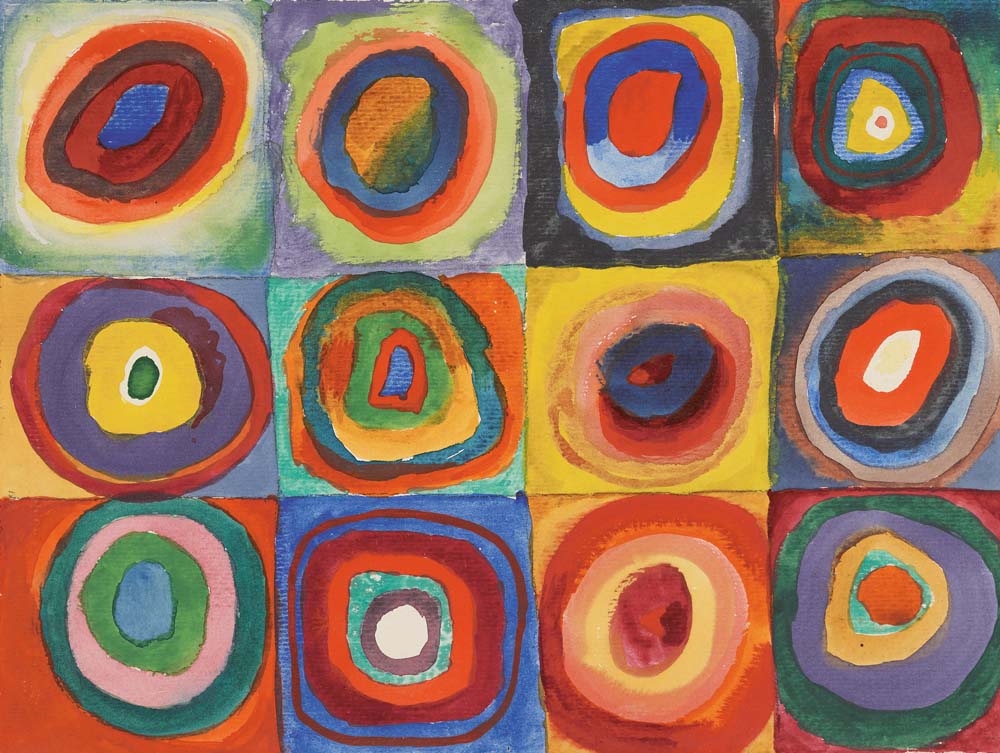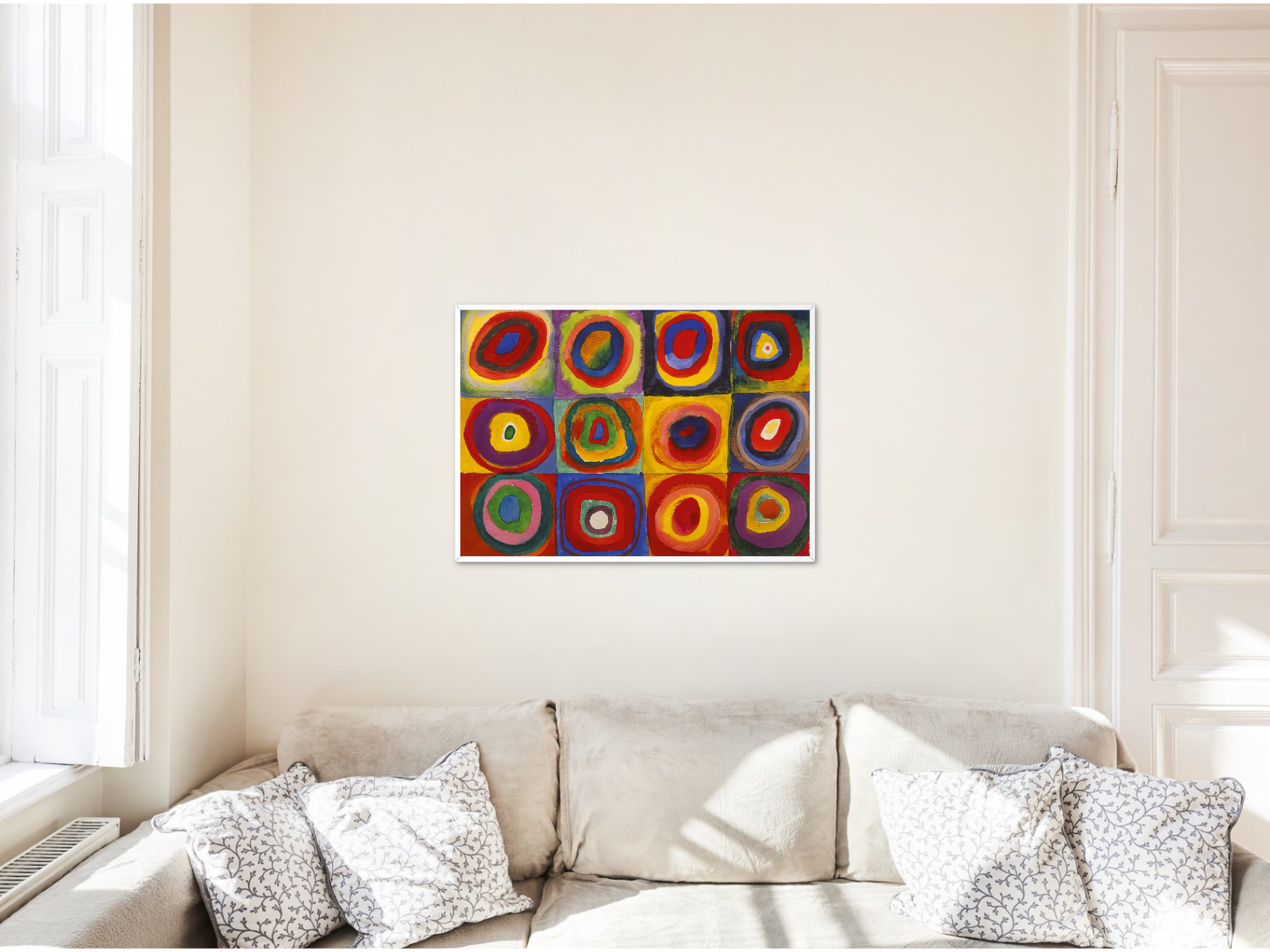Color Study, Squares with Concentric Rings
Wassily Kandinsky’s Color Study: Squares with Concentric Circles (c. 1913) is a landmark exploration of color theory and abstract form. Composed of twelve squares, each containing concentric circles, the work examines the emotional and visual effects of contrasting and harmonious hues. The circle—a recurring motif for Kandinsky—symbolizes unity, balance, and movement, while the grid provides a structured framework for vibrant experimentation. Though conceived as a study, its expressive energy and clarity of design have made it one of Kandinsky’s most celebrated works. Today, it resides at the Lenbachhaus Museum in Munich, a testament to his pioneering role in abstract art.
Ratings / Reviews
Información adicional
| Dimensions | Original: 23.9 cm x 31.5 cm, Small: 19.1 cm × 25.2 cm, Medium: 28.7 cm × 37.8 cm, Large: 33.5 cm × 44.1 cm |
|---|
$180.00 – $311.00Price range: $180.00 through $311.00
Wassily Kandinsky’s Color Study: Squares with Concentric Circles (c. 1913) stands as one of the most recognizable works in the history of abstract art, though its origins are more modest than its later fame suggests. Created as a study rather than a finished painting, the work is believed to have been a teaching aid for exploring the emotional and optical effects of color relationships. Kandinsky, a pioneer of abstract art, was deeply interested in the psychological resonance of color, often comparing its effect on the viewer to that of music.
The composition consists of a grid of twelve squares, each containing concentric circles rendered in different combinations of color. Within this simple structure, Kandinsky investigates a wide range of chromatic interactions: complementary contrasts such as red and green, analogous harmonies like blue and violet, and bold juxtapositions of primary hues. The work demonstrates not only his mastery of color theory but also his belief that each hue carries its own emotional and spiritual weight.
The circular form—recurring throughout Kandinsky’s oeuvre—held particular significance for the artist. To him, the circle represented balance, wholeness, and cosmic unity, while also symbolizing movement and transformation. Here, the loose and freehand rendering of the circles adds vitality, suggesting that color and form are not static but alive with energy.
The grid, by contrast, provides an underlying order. This interplay between structured arrangement and organic variation mirrors Kandinsky’s broader artistic philosophy: abstraction could contain both discipline and spontaneity. The juxtaposition of these two qualities invites the viewer to see the work as both a formal study and a poetic meditation on color’s expressive power.
Although Color Study: Squares with Concentric Circles was never intended as a major exhibition piece, its clarity of design and joyful palette have made it one of Kandinsky’s most reproduced and celebrated images. The work’s apparent simplicity belies the sophistication of its underlying experiment, as it demonstrates how color can evoke emotional responses without reliance on figurative subject matter.
Housed today at the Lenbachhaus Museum in Munich, the study remains a vivid example of Kandinsky’s contribution to abstract art and color theory. Measuring just 23.9 × 31.5 cm, it captures on a small scale the principles that would define much of 20th-century abstraction: the liberation of color from form, the interplay of harmony and tension, and the pursuit of visual equivalents to music and emotion.


